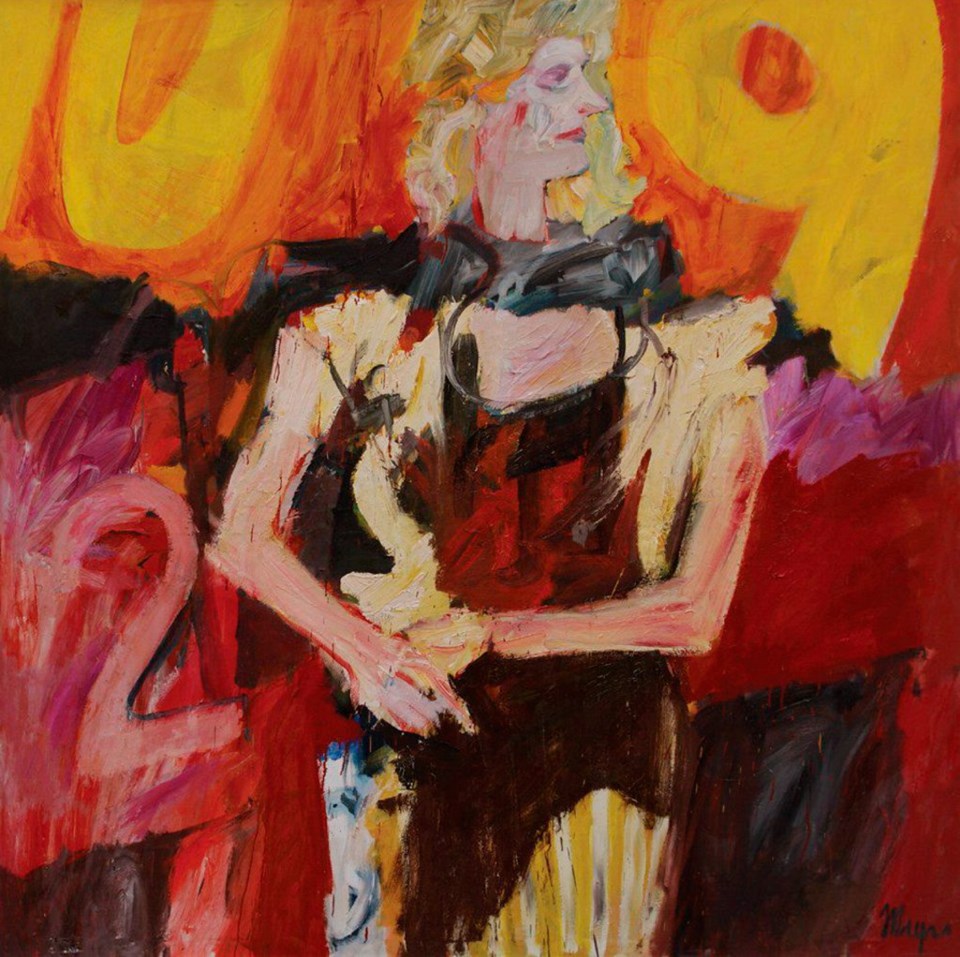PREVIEW
Uncensored: David Mayrs
Where: Winchester Galleries Humboldt Valley
When: Opening Saturday, 2 to 4 p.m.
Sitting and watching a room full of people discuss his paintings, David Mayrs came close to an artist’s dream.
Except the room wasn’t a gallery; it was a court of law. And the conversants weren’t patrons; they were lawyers and witnesses.
If you think of Canada as a bastion of free expression, consider this absurd scenario: A team of Vancouver police marched into the gallery hosting Mayrs’ work, confiscating two pieces and asked a third be renamed. On this day in 1967, gallerist Douglas Christmas was facing charges of obscenity.
“It was so ridiculous, I just couldn’t stand it,” said Mayrs, who only attended the first of three court dates. “They had a policeman up there and he said he was embarassed to take [the paintings] out in the trucks. When you think of what the police see every day of their lives — to be embarassed about a painting — I mean it’s just …”
But this was a time when the limits of art were being tested. Higher-profile cases had landed on both sides of the debate. In 1964, the U.S. Supreme Court ruled Henry Miller’s explicitly sexual 1934 novel Tropic of Cancer to be not obscene. The next year, Dorothy Cameron’s downtown Toronto gallery was raided by a morality squad and faced similar obscenity charges for showing seven erotic paintings by Robert Markle. She lost her Ontario Supreme Court appeal and was denied an appeal at the Supreme Court of Canada.
The law landed in Mayr’s favour.
Some of Mayr’s work from the 1960s through 1980s are on display in Victoria starting today, in a show titled Uncensored.
Now 77, Mayrs stopped painting 10 years ago. His work, which he created between jobs in advertising and art teaching, was considered strong enough to join public collections like the Vancouver Art Gallery. And while it resurfaces from time to time (in 2011 it was included in a show dedicated to surreal and absurd art called Unreal), attention from collectors today is limited. Recent paintings sold for $500 and $625 at a Christie’s auction, below their $1,000 to $1,500 estimated values.
Some might consider the pieces in question bad taste, for mixing religious symbols with sex. One showed the back of a man — meaningless in itself, but titled Jesus Masturbating. That one was renamed. The two confiscated pieces were La Dildo and St. George Ten Minutes After Slaying the Dragon, which showed a cartoonish rendition of the saint in profile with a naked maiden and was the one that landed Christmas in court.
“While not as explicit [and ironic] as La Dildo’s ‘male frontal nudity,’ St. George’s offence was that it showed not a sexual act, but a sexual act involving an English military saint, something that would have galled British Vancouver, and did,” Vancouver’s Trench Gallery published when they showed his work last year.
But the infuriating thing to Mayrs, now 77 and retired from the art practice, was the way advertising was getting away with similarly explicit content.
“I was so furious that these [ads] were allowed to go through with no trouble, and yet artists were being attacked for doing serious work,” he said.
Mayrs himself had worked in advertising, so he saw it first-hand.
And it inspired his next work — a series of silkscreens using real ads with sexual content. A woman with a cream spot on her shoulder, for example, in an advertisement for lotion. Or the image of a woman applying nail polish to her extended finger, while “the other two fingers were enclosed on what looked like a penis.”
But while the judge ruled in his favour, the damage was done.
“Galleries wouldn’t touch me for a while,” Mayrs said. “It didn’t do me any good, I’ll tell you that.”
